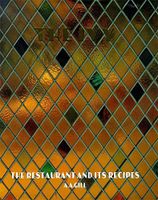Label
All
0
Clear all filters
2.45 P.M. (cont.) THE IVY
The chef sits at a table in the corner. A waiter asks what he would like. A pot of tea,
This is the regular weekly meeting to taste specials for the menu. Four starters, four main courses and four puddings. The menu is the single most important item in a restaurant. It is its calling card, its advertisement, its mission statement. Menus are pored over minutely by proto-restaurateurs, considered through bottles of wine and cups of coffee. The one bit of a restaurant that really is like theatre is the menu. It’s casting an epic: many dishes are called but few are chosen. Everyone is looking for that magic combination that ignites the fickle palate of the customers into flaming, insatiable desire. Do you go for a cast of thousands and overstretch the kitchen, waste ingredients and risk mediocrity, or do you go for a focused drama and limited choice for a few big stars that you know you can do well but risk limiting or perhaps boring your public? Do you go for a specialist genre — Finnish or fishish, grills, Thai, French and Thai, French and Californian, Californian with topless waitresses on roller skates, minimal meaty or vegetarian?
Part of
Advertisement
Advertisement
The licensor does not allow printing of this title


